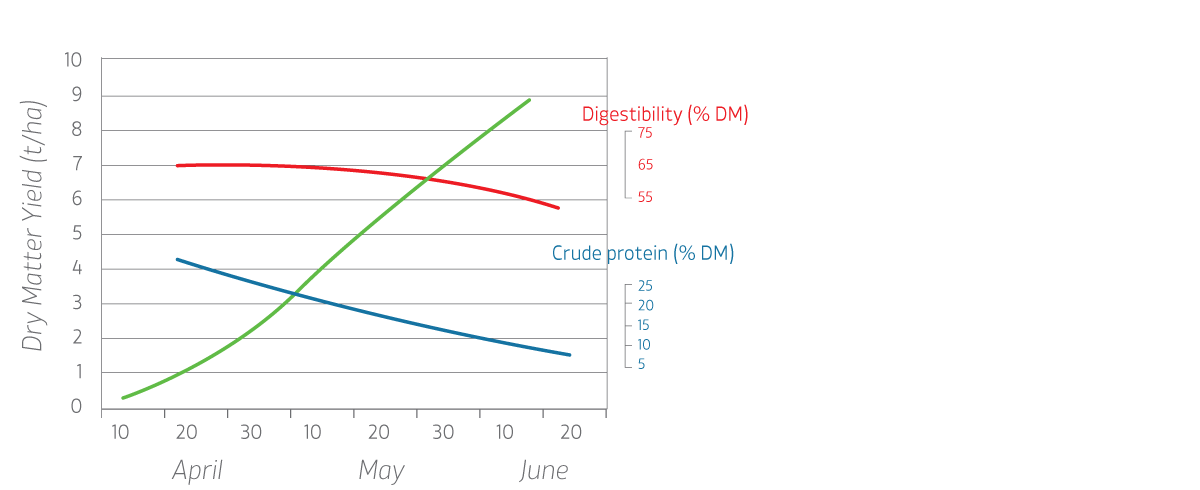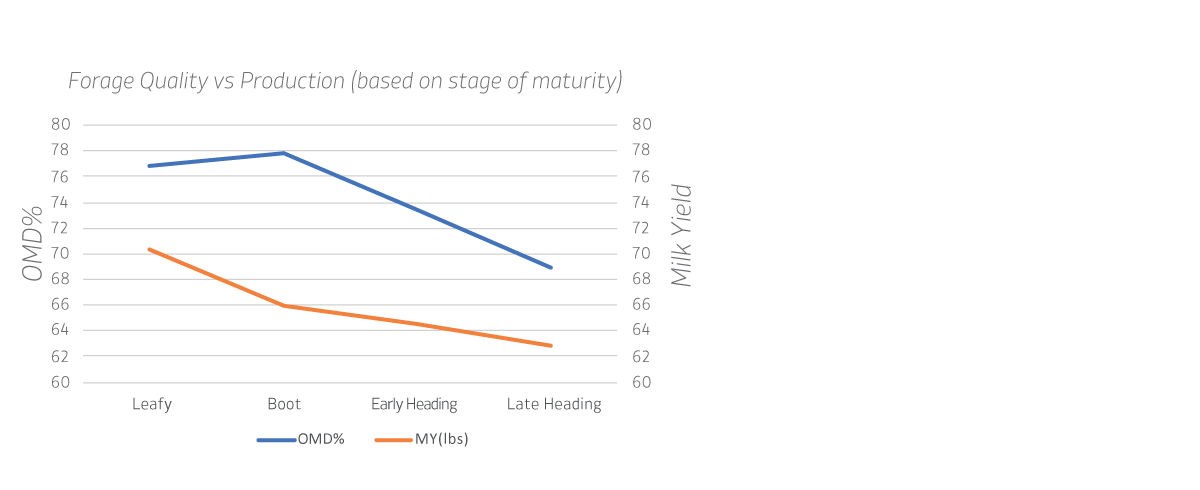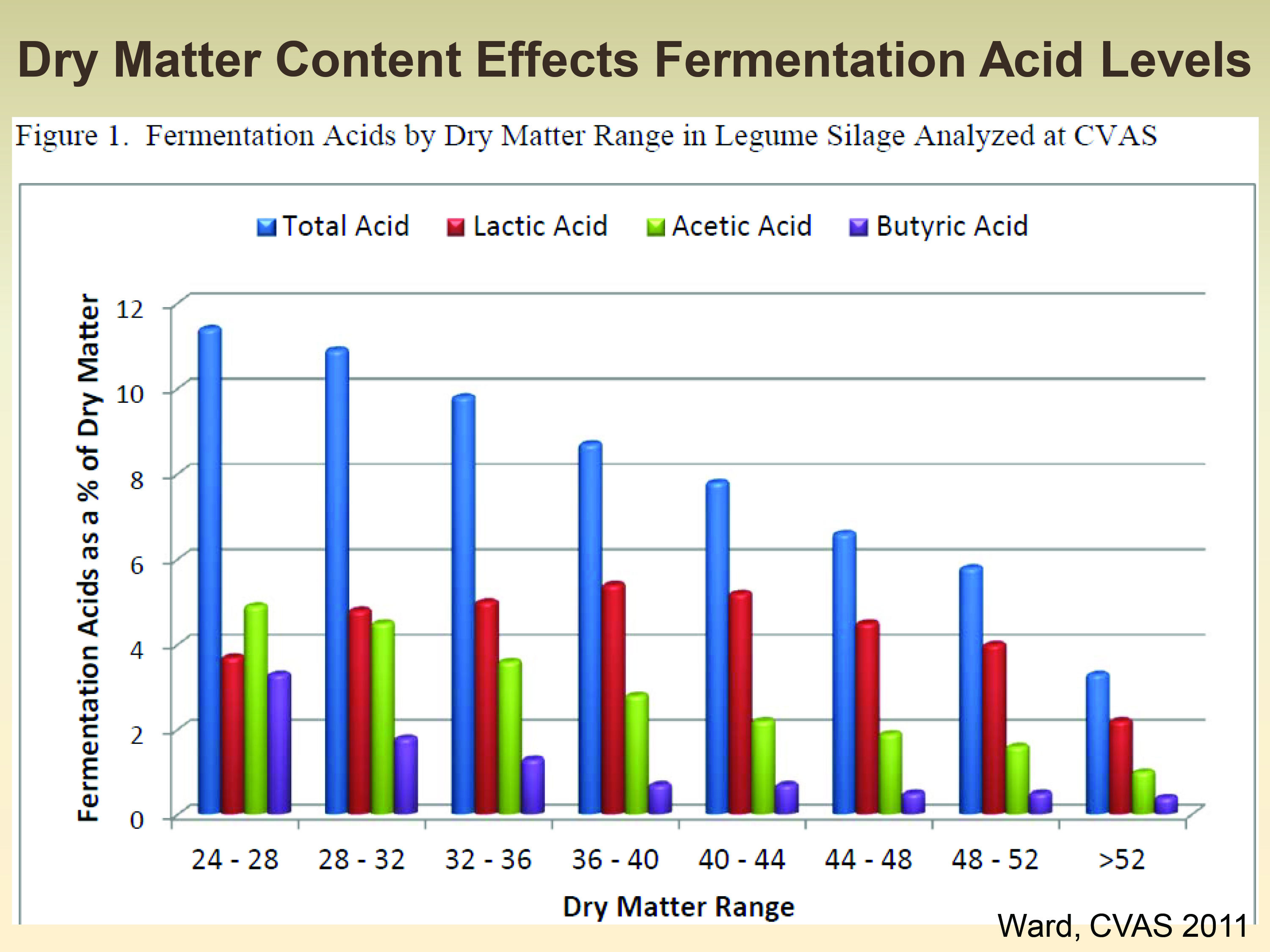It’s Critical: Forage quality
Three CRITICAL reasons to produce high quality silage this year
- The more nutrients you can provide from quality, home-produced silage, the less you need to rely on bought-in feeds
- When milk and meat prices do improve, having high quality silage in store, rather than low quality, puts you in a much stronger position to increase production again
- It costs a similar amount to produce good silage as bad silage. So why produce bad silage?
With the economy of today, it’s critical for producers to get the absolute most out of their forages. High quality forages reduce out of pocket and purchased feed costs. For the most part, the input costs for those spring and summer forage crops has already been spent. Next is ensuring you can capitalize on this investment, and on the quality that those crops can provide.
Yes, inoculants come with a price, but in short, it could cost you more to not use a proven inoculant!
The critical factors that can be controlled:
- Crop maturity
- Crop moisture
- Packing/Storing
- Inoculant use
Harvesting young, high protein, highly digestible spring crops or first, second and third cuttings will provide very productive forages. Missing the mark and delaying harvest of that crop by 5-10 days will significantly reduce its quality and in turn require additional purchased feed cost to maintain production at a level similar to that of the high-quality forages. We see this “miss” happen often in the spring when corn planting is occurring during forage harvest time. Simply put, park the planter!
_(28)_maxWidth_1600_maxHeight_1600_original.jpg?1588074481) Quality vs Quantity
Quality vs Quantity
Changes in yield and quality of early perennial ryegrass during spring growth
 Achieving proper moisture at harvest will allow for a quality fermentation to occur and proper packing. Too wet and the potential for clostridial fermentation to occur is high. The potential for excessive leaching is also high. That effluent is not only an environmental concern, it is also full of quality nutrients you want to keep for your animals. On the other side, too dry, and silage will be at risk of spoilage; yeasts, molds and potentially mycotoxins.
Achieving proper moisture at harvest will allow for a quality fermentation to occur and proper packing. Too wet and the potential for clostridial fermentation to occur is high. The potential for excessive leaching is also high. That effluent is not only an environmental concern, it is also full of quality nutrients you want to keep for your animals. On the other side, too dry, and silage will be at risk of spoilage; yeasts, molds and potentially mycotoxins.
During harvest and storage, achieving a high packing density of around or better than 17#DM/ft3 will help eliminate oxygen during ensiling and keep it out during feed out. It will also help aid the fermentation process, as an anaerobic (without air) environment is needed for proper fermentation to occur. Proper packing also reduces DM loss (shrink) during the ensiling process.
The effect of packing density on dry matter losses after ensiling
| Silage density (Lb DM/tt3) | Dry Matter loss (%) |
| 10 | 20.2 |
| 14 | 16.8 |
| 15 | 15.9 |
| 16 | 15.1 |
| 18 | 13.4 |
| 20 | 10.0 |
Source: Ruppel, 1992
To inoculate or not?
That is the question. The answer, in short, is always “Yes”.
Yes, inoculate with a quality proven inoculant from a reliable company. Be sure to choose a product that has a good amount of independent, published data to support its efficacy. Be aware there are many inoculant products on the market today that have little or no published trial work to show they are effective.
As dairyman and cattleman, you get paid for the product you produce: milk or beef.
Your best choice is to select an inoculant, like Ecosyl or Ecocool, that has a large number of production trials showing an increase in production when cattle are fed forages that have been treated with it.
Even if you need to reduce production, feeding better quality silage made using a quality inoculant could allow you to reduce your purchased feed use more than if you were relying on feeding inferior silage made without one.
Impact of silage quality on animal performance
| Dry Matter Digestibility | 75 | 70 | 65 | 60 |
| Intake (kg/day) | 9.0 | 8.3 | 7.6 | 7.0 |
| Liveweight Gain (kg/day)(kg/day) | 0.83 | 0.66 | 0.49 | 0.31 |
| Carcass (kg/day) | 0.51 | 0.39 | 0.27 | 0.15 |
(D Warner et al '17)
 Remember also the importance of having enough silage to feed. Choosing to not use a proven inoculant can, based on trial data, result in shrink of 3-5%.
Remember also the importance of having enough silage to feed. Choosing to not use a proven inoculant can, based on trial data, result in shrink of 3-5%.
Check out what Ecosyl and Ecocool can do for you.

_maxWidth_1600_maxHeight_1600_original.jpg?1588074760)